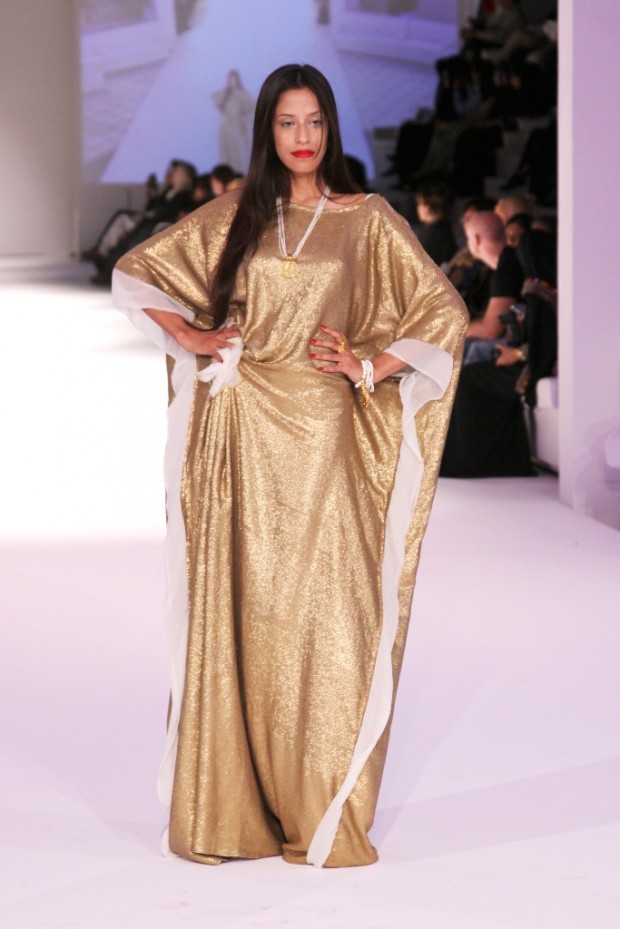 Afaf al Farsi along with her sister, Aida al Farsi, arrives for our meeting accompanied by a mustard-yellow leather bag with a strip of Omani Bedouin weaving attached to its chain-strap. In a sense, the styling of the bag perhaps epitomizes what Dibaj is all about: giving a fresh context to modernity through a garnish of the past.
Afaf al Farsi along with her sister, Aida al Farsi, arrives for our meeting accompanied by a mustard-yellow leather bag with a strip of Omani Bedouin weaving attached to its chain-strap. In a sense, the styling of the bag perhaps epitomizes what Dibaj is all about: giving a fresh context to modernity through a garnish of the past.
Dibaj, or ‘silk’ in Old Arabic, was a seemingly inevitable destination for the fashion and design-inclined Al Farsi sisters’ creative journey. Aida remarks that she was the family’s honorary fashion designer, whose designs for dresses and jelabiyas received appreciation from their friends and family. The roles have now become reversed what with Afaf supervising the creative and design elements and Aida looking after the management nitty-gritty of their business. “We have no formal education in fashion or art so this really is a case of creative labor,” says Afaf.
Having earlier begun Dibaj from home, creating smaller pieces for their friends and family, the sisters formally opened their boutique in 2009 and have thoroughly immersed themselves into the business of designing. “Our collection mostly consists of dresses, modern with an Omani touch,” says Afaf, pointing out that they identified a need in the market where Omani women wished to dress in contemporary, figure-flattering yet culturally-appropriate garments. Dibaj dresses are design studies in flowing, draped, regal-like fabric; yet, splashes of Omani accents distinguish the garments, with typically Omani embroidery constituting a dress’ neckline or traditional silver thread-work enlivening a nude-toned lace dress. “These are garments that we can wear both in Oman as well as abroad,” Afaf says, describing the overwhelmingly positive reception a Dibaj dress received when her friend wore it abroad in Europe.
What with their father being a diplomat, the sisters naturally have derived much inspiration from their travels abroad. However, Oman’s stunning mountains and desert happened to be their muses for their Winter 2010 collection. The collection was shown at Muscat Fashion Week 2011 in February during the Muscat Festival and earned accolades from fashion critics at New York Times.
Apart from their clothing collection, the sisters have also additionally launched a jewelry line. “In the past, our grandmothers wore the traditional jewelry all the time; it is no longer the case now and that made us sad,” says Aida. “We were interested in younger people wearing it as well.” The sisters thus strove to re-present exquisite examples of Omani jewelry workmanship in a contemporary avatar, thus rendering the jewelry wearable and trendy. Having picked up antique jewelry pieces from Muttrah souk and Nizwa, to name a few places, they envelop it in 24 karat gold prior to combining it with threads, leather, semi precious stones, wood, and beads. For example, Afaf is wearing a spiked Omani bangle along with magenta thread wrapped further down around her wrist, having alternately styled the wearing of the bangle. “Plus, the spiked element makes something antique so edgy and so 'today',” points out Afaf, who also wears what used to be a kohl applicator as a pendant strung on knotted chocolate brown thread. All models wearing the Dibaj collection at the Muscat Fashion Week similarly wore the Dibaj jewelry line as well.
Dibaj’s clothing and jewelry line embodies Oman’s inherent simplicity, attracting attention through elegant, minimalist lines infused with striking Omani accents. The phrase, it's all in the details is thus very much apt for Dibaj.
– Priyanka Sacheti







